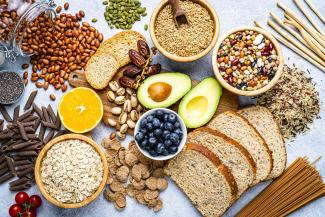Quick ways to increase fiber in your meals

A few months ago, we reviewed the importance of fiber and how it can help us reduce the risk of developing conditions such a heart disease, diabetes, diverticular disease, constipation, and colon cancer. Fiber is also critical for the health of the digestive system and for lowering cholesterol.
Now let’s dive in to how we can add this nutrient in our daily meal plans.
1. Eat whole fruits instead of drinking juices. Juices don't have fiber.
2. Use fruit as a dessert, that will help you decrease the amount of sugar, satisfy the sweet tooth craving, and increase fiber in your day. At least aim to have 2 fruits per day.
3. Eat a minimum of three servings of vegetables, which amounts to a half-cup of raw vegetables, or a cup of leafy greens.
4. Include legumes, such as beans, lentils, and peas, at least three times a week. You can include them either as a plant-based protein in meatless dishes, or as the starch side in place of grains. For example, you could have chicken with peas rather than rice.
5. Use whole wheat flour when possible in your cooking and baking.
6. Choose whole grain bread. Look on the label for breads with the highest amount of fiber per slice.
7. Rely on whole grains like brown rice, wild rice, or bulgur. For pasta, look for versions made from quinoa, whole wheat, or pulses like chickpeas and lentils.
8. Add nuts and dried fruit to other items like yogurt, oatmeal, salads, and stir-fries.
9. Seeds including chia, flax and pumpkin are great sources of fiber– you can used them as toppings in your meals or snacks.
10. Drink water! Remember this is key for fiber to work correctly in our body.
The bottom line is, if you’re aiming for a healthy lifestyle, try to get a variety of fiber types from whole fruits, vegetables, and grains, and enjoy the journey!
